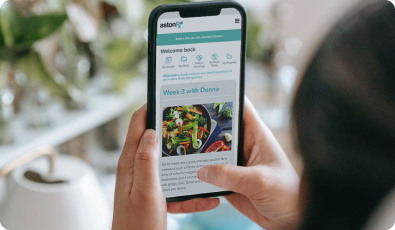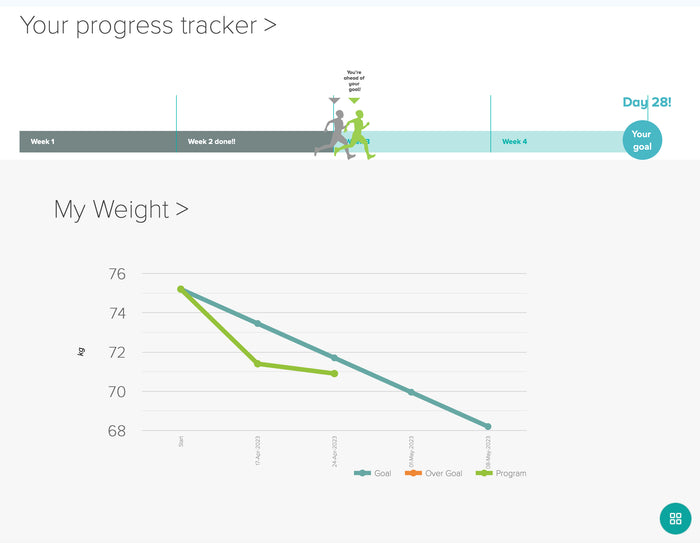If you’ve ever tried to cut back on snacks or shed a few kilos, you’ve probably been told it’s just about willpower. Push through. Try harder. Eat less. Move more.
But what if the problem isn’t you — what if it’s your environment?
Let’s start with something simple. In Australia, when you apply for or renew your driver’s licence, you’re asked if you want to be an organ donor. Sounds like a personal choice, right? Yet around the world, consent rates vary drastically. In countries where the default is “yes” unless you opt out (like Austria), over 90% of people become donors. In countries where you have to actively opt in (like Germany), the rate can be under 15%.
The lesson? Defaults matter.
This same principle applies to our health — and especially our eating habits. The way our days are structured, or more accurately not structured, has made overeating the default. To reverse that, we don’t need more willpower. We need to change the default.
The 1970s Default: Not Eating All the Time
Let’s rewind a few decades. Imagine it’s 1975 in suburban Australia.
What did a typical day of eating look like?
- Three meals. No snacks.
- Breakfast was usually at home.
- Lunch was something simple, often brought from home.
- Dinner was whatever Mum made — meat and three veg.
- Snacking? Only if it was a special treat. It would spoil your appetite for your meal!
You ate at the table, not in front of the telly or while walking to your next meeting. Food was a designated activity, not a background habit.
Fast forward to today. You can buy food literally everywhere: servo stations, office lobbies, every second shopfront. Got a craving? Uber Eats will be at your door in 15 minutes. Hungry or not, food is always available, and more importantly, always socially acceptable.
We’ve shifted from "eat when it's time to eat" to "eat whenever you feel like it."
And that small shift in default — from structure to spontaneity — has had huge consequences.
It’s Not Willpower, It’s Environment
Let’s be honest. It doesn’t take willpower to not snack when there’s no food around. Back in the day, there were no biscuits in the boardroom, no vending machines at the gym, no muffins waiting in every café queue. You’d actually have to go out of your way to find a snack.
Now? We’ve built a world where not snacking takes effort. Think of your office: a birthday cake here, a tray of pastries there. The “help yourself” mentality is everywhere — and it’s a trap for anyone trying to eat better.
You Need a Structured Default
Health and weight loss isn’t about restriction. It’s about returning to a structured default — the way our parents and grandparents used to eat before the food industry exploded.
Here’s what you can do:
What to eat:
✅ Whole, natural foods
❌ No ultra-processed snack foods or sugary drinks
When to eat:
✅ 2–3 proper meals
❌ No grazing or late-night snacking
Where to eat:
✅ At a table — sit down! At home or in a designated space
❌ Not at your desk, in the car, or in bed
Why you eat:
✅ Hunger, nourishment, enjoyment
❌ Boredom, emotions, mindless habit
How much:
✅ Until satisfied, not stuffed. Slow down.
It sounds simple, but going back to this structured framework automatically reduces overeating — because the new default becomes not eating all the time.
Workplaces Matter Too
If you have any influence in your workplace, consider this:
- No more cakes at every birthday
- No food in meetings
- No candy bowls at reception
- Eating only in the break room or kitchen area
We’ve normalised constant eating to the point where not eating feels weird. But this constant exposure to food makes it harder for everyone — especially those working on their health. Reintroducing structure at work makes things easier, not harder.
The Rebirth of Fasting
Back in the 70s, nobody used the word “fasting.” It was just called not eating between meals.
People weren’t counting calories, carbs or macros. They weren’t on keto, paleo or plant-based plans. Yet obesity was rare. Why?
They weren’t eating all the time.
Compare that to now: Australians are snacking more than ever, often without even realising it. A biscuit with the morning coffee. A muesli bar on the school run. A ‘coffee’ that’s actually more like a dessert. A few spoonfuls of dinner while cooking. It all adds up — and it all keeps insulin and hunger hormones elevated, blocking fat loss, fuelling cravings and draining energy.
Structured fasting windows (like eating only between 8am and 4pm) are not a diet — they’re a return to the way humans evolved to eat.
Final Thoughts: It’s Time to Reset Your Default
If you want to lose weight and feel better, stop relying on willpower to fight a broken food environment. Instead, reset your default. Create structure. Make “not eating” the path of least resistance again.
You don’t need to live like it’s 1975. But you can learn from it.
Let’s bring back:
- Real food
- Real meals
- Real structure
And leave behind the all-day snack-a-thon that’s become our modern default.
























